Accessibility will have a new face at the Olympic and Paralympic Village in Greater Paris.
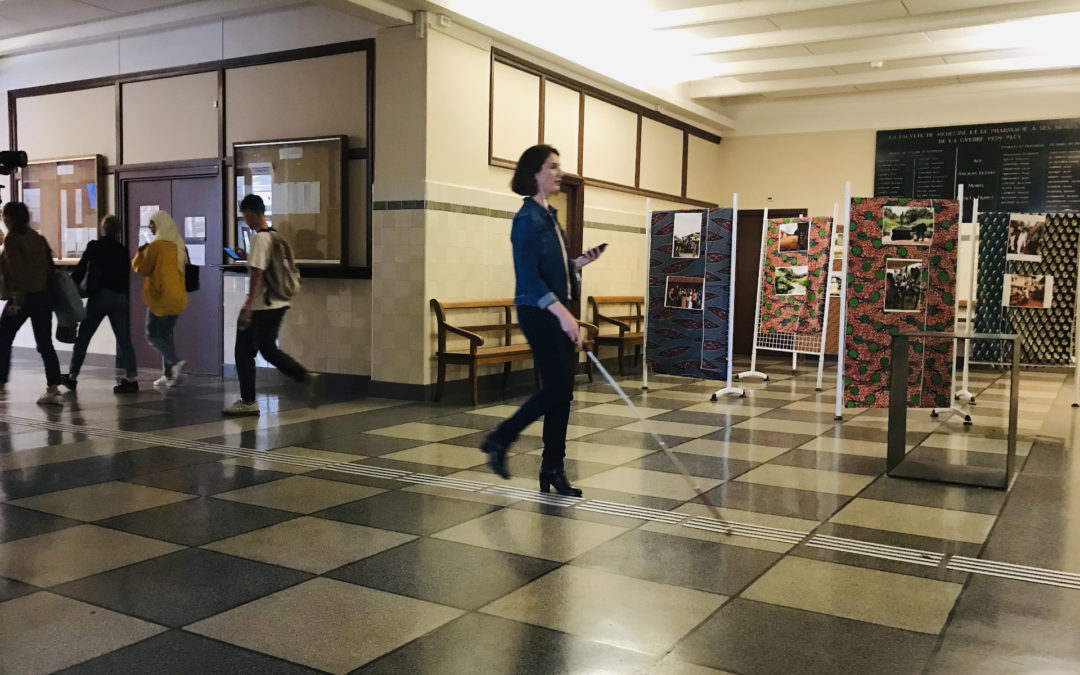
What Is a Phygital Experience and How Can It Improve the Accessibility of Your Venue?
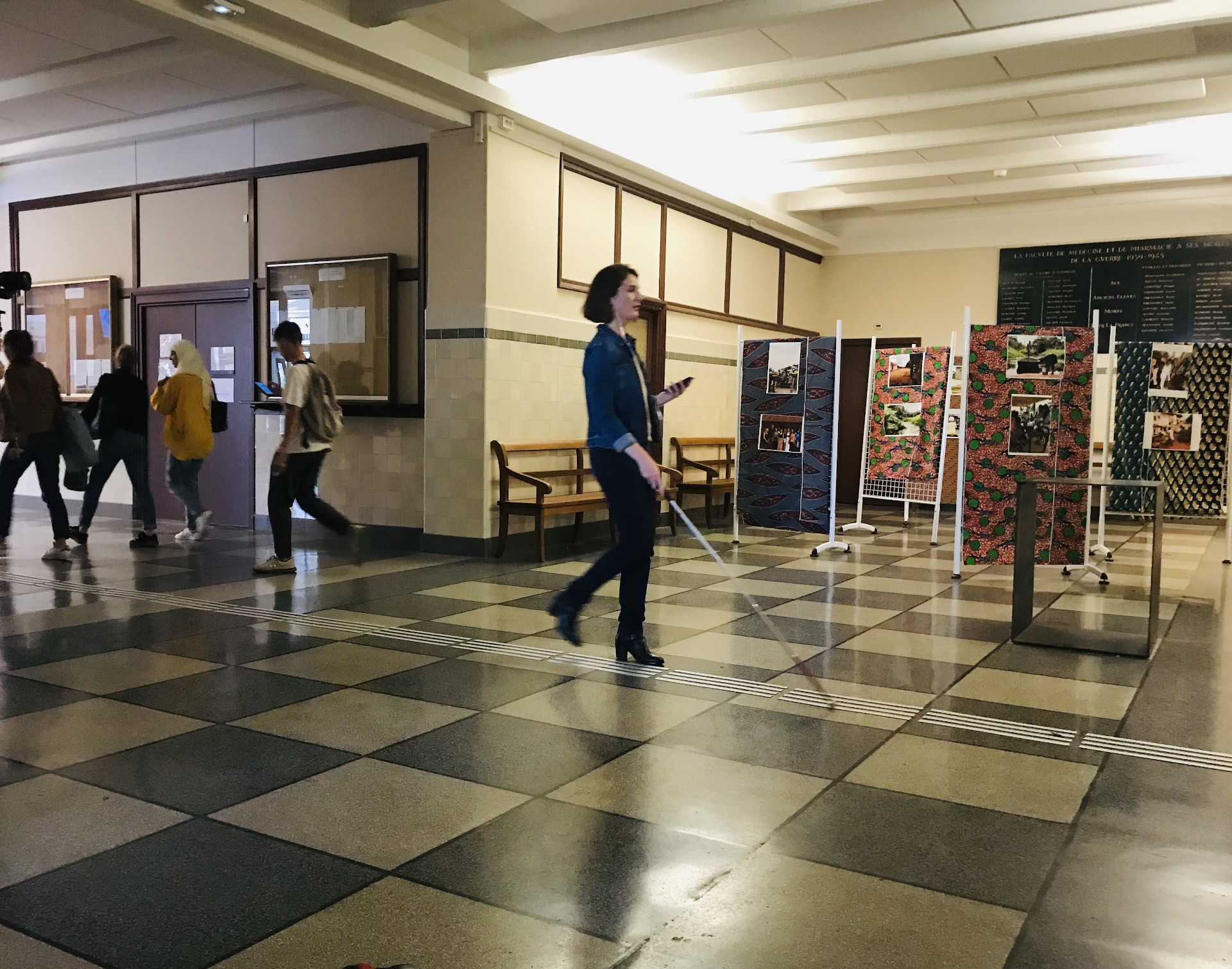
What Is a Phygital Experience and How Can It Improve the Accessibility of Your Venue?
Avez-vous déjà entendu parler de l’« expérience phygitale » ? Elle consiste à créer un pont entre le monde numérique et le monde physique pour offrir aux utilisateurs une expérience interactive unique.
Alors que le monde numérique prend de plus en plus de place dans nos vies, vous serez bientôt plus familier avec les expériences phygitales. Elles peuvent s’intégrer à tous les aspects de notre quotidien pour le rendre plus facile : centres commerciaux, musées, carrefours…
Mais il existe une catégorie de personnes pour qui les expériences phygitales ne sont pas seulement des expériences « ordinaires ». En effet, pour les personnes en situation de handicap, elles représentent une amélioration de l’accessibilité. Les expériences phygitales combinent le meilleur des deux mondes pour supprimer les obstacles à l’accessibilité et favoriser l’inclusion.
Voyons quelles formes les expériences phygitales peuvent prendre pour améliorer l’accessibilité !
Quelle est la signification de l’expérience phygitale ?
Tout d’abord, il faut comprendre le concept de phygital. Ce terme fusionne « physique » et « numérique » pour illustrer comment le phygital combine ces deux mondes.
Phygital utilise la technologie pour connecter le monde numérique au monde physique. L’objectif est d’offrir aux utilisateurs une expérience unique et interactive.
En termes simples, la technologie est un outil au service des utilisateurs. Elle s’ancre dans le monde physique pour leur apporter un petit plus grâce à des solutions numériques.
Le phygital est comme un pont reliant les deux mondes au bénéfice des utilisateurs.
Exemple d’expérience phygitale
Le jeu Pokémon GO est un parfait exemple d’expérience phygitale. Vous avez peut-être déjà chassé des Pokémon ou vu des joueurs s’amuser en les attrapant tous, même s’ils avaient l’air ridicules.
Le jeu, lancé en 2016, utilisait la réalité augmentée et virtuelle ainsi que la géolocalisation pour que les utilisateurs puissent attraper des Pokémon à proximité avec leurs smartphones.
Il suffisait de l’appareil photo de son smartphone et de son GPS pour chasser les Pokémon et enrichir sa collection. On pouvait en trouver près de son lieu de travail, à l’arrêt de bus, dans la rue… partout autour de soi.
Ce jeu a créé une toute nouvelle expérience sociale et phygitale . Les utilisateurs étaient facilement reconnaissables, car ils étaient seuls avec leur smartphone. Mais cela ne les empêchait pas de partager des astuces pour trouver leurs petits monstres préférés.
Ils pourraient tous se rencontrer dans le monde réel, et non plus simplement derrière un écran, confortablement installés chez eux, créant ainsi une expérience phygitale interactive.
Qu’implique une expérience phygitale pour les personnes en situation de handicap ?
Grâce aux expériences phygitales, l’accessibilité et l’inclusion peuvent aller plus loin.
Comme vous le savez peut-être déjà, l’ Americans with Disabilities Act (ADA) vise à prévenir toute forme de discrimination à l’égard des personnes handicapées. Il énumère une série d’exigences pour que tous les lieux de notre vie quotidienne leur soient accessibles : lieux publics, passages piétons avec signalisation accessible, lieux de travail pour les employés handicapés, transports en commun, logements…
Mais l’accessibilité physique des infrastructures complexes peut être limitée, notamment celles construites au siècle dernier. Rénover une infrastructure très ancienne peut s’avérer impossible, car cela serait trop coûteux.
C’est le cas du métro de New York. Il a été mis en service pour la première fois en 1904. À cette époque, l’accessibilité n’avait pas été prise en compte lors de sa conception. Aujourd’hui, les usagers handicapés subissent les conséquences de ce manque d’accessibilité.
Le réseau de transport rapide de la Grosse Pomme s’engage à améliorer l’accessibilité. La MTA a même fait appel à l’innovation pour atteindre cet objectif.
Comment l’innovation promet de révolutionner l’accessibilité dans le métro de New York
En plus de planifier l’installation d’équipements d’accessibilité physique comme des ascenseurs ou des rampes d’accès, la MTA teste actuellement l’ application de navigation intérieure Evelity pour les utilisateurs handicapés de la station Jay St-MetroTech .
Cette application a été spécialement conçue pour répondre aux besoins des personnes en situation de handicap. Elle s’adapte au profil de chaque utilisateur.
Ainsi, Evelity propose des itinéraires sans marches pour les personnes en fauteuil roulant. Pour les personnes aveugles ou malvoyantes, l’application fournit des instructions étape par étape grâce à un lecteur d’écran.
Dans ce contexte, les usagers en situation de handicap bénéficient d’une expérience phygitale en métro. Une expérience adaptée à leurs besoins et à leurs capacités. Ils bénéficient ainsi du meilleur des deux mondes en matière d’accessibilité.
En effet, les usagers en situation de handicap améliorent leur mobilité tout en restant autonomes.
Une expérience phygitale comme celle-ci leur permet d’accéder plus facilement aux transports en commun, notamment lorsque des obstacles techniques ou topographiques empêchent leur accessibilité par des moyens physiques.
Quels sont les avantages de mettre en place une expérience phygitale dans votre établissement ?
Créer une expérience phygitale interactive pour les personnes handicapées présente de nombreux avantages :
⊗ Aller au-delà des exigences de l’ADA pour être entièrement accessible.
⊗ Mettre la technologie au service des utilisateurs en situation de handicap. Ce n’est qu’un moyen pour parvenir à une fin.
⊗ Accès à des services. Par exemple, l’application Evelity fournit du contenu culturel géolocalisé dans un musée, ainsi que des instructions de navigation.
⊗ Se concentrer sur l’usage et pas seulement sur les exigences et réglementations en matière d’accessibilité. L’objectif est de se mettre à la place de l’utilisateur pour comprendre ses besoins, mais aussi sa façon de se déplacer dans un lieu et d’utiliser les équipements et les services.
⊗ Redonner aux personnes handicapées la place qui leur revient dans notre société. Les personnes handicapées sont partout autour de nous. De plus, cela ne concerne pas seulement les 61 millions d’Américains handicapés, mais nous tous. C’est une opportunité de favoriser l’inclusion.
Découvrez une perspective unique sur l’inclusion avec cette interview de Gabrielle Halpern, docteur en philosophie :
Faut-il parler d’« hybridation » ou d’« inclusion » à propos des personnes handicapées ?
Dans quelles situations une expérience phygitale peut-elle améliorer l’accessibilité et l’inclusion ?
Tout comme l’ADA est appliquée à tous les domaines de notre vie, des expériences phygitales peuvent également avoir lieu dans chacun d’entre eux.
Piétons handicapés
Commençons par les déplacements en ville. Quand on est aveugle ou malvoyant, comment savoir si on est dans la bonne direction ?
Tokyo au Japon a répondu à cette question en utilisant des blocs tenji.
Il s’agit de sentiers de guidage tactiles jaunes avec un code QR . Cette signalisation tactile facilite la circulation des personnes aveugles et malvoyantes aux passages piétons, dans les stations de métro et devant les lieux publics.
Les bosses rondes indiquent un feu de circulation, une entrée de gare ou la fin d’un quai et leurs lignes parallèles les aident à trouver leur chemin.
La couleur jaune est importante car elle éclaire un contraste visuel et peut ainsi être mieux perçue par les malvoyants.
Depuis les années 1960, les personnes aveugles et malvoyantes au Japon utilisent ce système. Il a été modernisé pour les aider à s’orienter plus facilement : une application permettant de scanner les codes QR placés sur les blocs tenji a été créée.
Grâce à l’application shikAI, les personnes malvoyantes peuvent savoir où mènent les blocs tenji et la distance restante à parcourir.
C’est encore une fois la combinaison d’équipements physiques et d’une solution numérique qui améliore l’accessibilité d’une ville.
Utilisateurs handicapés
Nous avons déjà évoqué Evelity pour le métro de New York et ses usagers handicapés.
Mais de telles applications de navigation intérieure peuvent être utilisées dans tous types de lieux publics complexes : centres commerciaux , hôpitaux, bâtiments intelligents , mairies, collèges et universités …
Qu’il s’agisse de bâtiments anciens ou nouveaux, l’utilisation de la technologie pour atténuer les obstacles à l’accessibilité peut faire une différence pour les personnes handicapées.
Les expériences phygitales leur offrent les mêmes opportunités qu’à tout le monde. Ils peuvent aller partout et accéder à tous les services. Il n’y a plus de limite. Et toutes les portes sont et restent ouvertes.
Visiteurs handicapés
Les musées ont toujours eu pour vocation de rendre la culture accessible à tous, y compris aux personnes handicapées. Ils ont installé des rampes d’accès et abaissé les œuvres d’art pour les visiteurs en fauteuil roulant. Ils ont également mis à disposition des maquettes tactiles pour que les personnes aveugles et malvoyantes puissent les toucher…
Toutes ces actions rendent l’art accessible. Mais les musées se sont également tournés vers les nouvelles technologies comme la réalité augmentée et la réalité virtuelle pour être accessibles et offrir à leurs visiteurs une expérience phygitale interactive unique.
Par exemple, la Salle des Verres du musée du Louvre à Paris a choisi Tactile Studio , une agence française de design inclusif promouvant les arts et la culture pour tous, pour créer une expérience phygitale pour ses visiteurs.
Il s’agit d’une maquette d’un palais d’Henri II, représentant toutes les pièces et leur mobilier. Il est également équipé d’une console « sensitive » permettant aux visiteurs d’interagir avec les différentes pièces grâce à un système d’éclairage interactif.
Grâce à cette console « sensible » , les visiteurs peuvent en apprendre davantage sur les salles du palais et leur histoire. Ils peuvent également se repérer dans le palais.
Cette console fait office de station de médiation : elle propose des textes informatifs et des pictogrammes pour chaque pièce grâce à des capteurs infrarouges. Il suffit aux visiteurs de passer la main devant les capteurs pour éclairer les pièces.
Mais ce n’est pas tout : une station sensorielle propose une exploration tactile et sonore. Le plan d’orientation tactile permet aux visiteurs de se repérer et de retrouver l’œuvre telle qu’elle était sous le règne d’Henri II.
Les visiteurs aveugles et malvoyants peuvent toucher une maquette de casque de guerrier et s’immerger dans cette œuvre. Des textes en braille contenant des informations complémentaires sont également disponibles.
Tout cela permet aux visiteurs en situation de handicap de s’immerger dans la France d’Henri II et d’interagir avec les œuvres.
Comment rendre les musées plus accessibles aux personnes handicapées ?
Un autre musée a également choisi une expérience phygitale pour ses visiteurs en situation de handicap : la Maison Victor Hugo à Paris , dédiée au célèbre écrivain français.
Nous retrouvons Evelity, l’application de navigation intérieure. Mais ici, elle ne se contente pas de guider les visiteurs en situation de handicap d’une exposition à l’autre. Elle leur propose également des contenus de médiation géolocalisés .
Evelity fait également office de guide fournissant aux visiteurs des explications sur les œuvres qu’ils rencontrent au cours de leur parcours.
Une expérience unique pour mieux découvrir et comprendre les œuvres. Un accès complet et réussi à la culture !
Grâce aux expériences phygitales, les personnes en situation de handicap accèdent à un monde nouveau. Un monde où elles peuvent bénéficier d’équipements physiques et de solutions numériques pour interagir, s’orienter, apprendre, toucher, entendre et voir. Cela améliore l’accessibilité et l’inclusion des lieux, quels qu’ils soient.
Le phygital est un concept qui peut révolutionner leur place dans notre société. Ils n’ont plus besoin d’être passifs et accompagnés pour se déplacer. Ils peuvent maîtriser leurs actions et leur mobilité.
Vous souhaitez savoir comment la technologie peut simplifier la vie des personnes handicapées ? Consultez ces articles :
Le smartphone : une révolution pour les aveugles et les malvoyants !
Le handicap comme moteur d’innovation pour la ville intelligente
Publié le 20 mai 2022
media
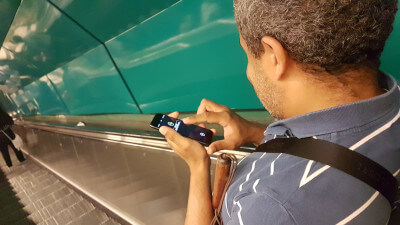
Phygital experiences provide users with disabilities with the same opportunities as anybody else. They can go anywhere and have access to all services. There’s no limitation any longer. And all doors are and remain open.
writer

Carole Martinez
Content Manager
stay updated
Get the latest news about accessibility and the Smart City.
other articles for you

Open Data Is Key to Fostering Universal Accessibility
Open data represents an opportunity for cities to reach universal accessibility. It shows the missing links of the mobility chain.
Our Audio Beacons Guide the Blind and Visually Impaired at the Helsinki Subway
The Helsinky subway improved their audio signage system by installing on demand and remotely activated audio beacons.
7 Good Reasons to Install Audio Beacons at Your Public Transport Network
Audio beacons are an efficient way to provide more autonomy to blind and visually impaired people. They can easily use public transport.

Will Remote Activation Become the Norm for Accessible Pedestrian Signals?
More and more cities like New York have been exploring remote activation to trigger accessible pedestrian signals.
share our article!
more articles

Disability Statistics in the US: Looking Beyond Figures for an Accessible and Inclusive Society
Disability Statistics in the US: Looking Beyond Figures for an Accessible and Inclusive Society Around 61 million adults in the United States live with a disability. Diving into disability statistics in the US will help us know exactly who is concerned and what...
Our Audio Beacons Guide the Blind and Visually Impaired at the Helsinki Subway
Our Audio Beacons Guide the Blind and Visually Impaired at the Helsinki SubwayOur audio beacons equip the new line of the Helsinki subway in Finland. They help blind and visually impaired people locate the points of interest of a station. For users with visual...

Will Remote Activation Become the Norm for Accessible Pedestrian Signals?
Will Remote Activation Become the Norm for Accessible Pedestrian Signals?Without pushbutton, there are no accessible pedestrian signals. That’s how APS work in the U.S. But more and more cities have been exploring remote activation like New York City. The Department...

Hearing Impaired People: a Multitude of Profiles for Different Needs
Hearing Impaired People: a Multitude of Profiles for Different Needs Did you know that hearing impaired people have several profiles and that the way they identify themselves is important? You may be familiar with deaf and hard of hearing people but for each of...
NEVER miss the latest news about the Smart City.
Sign up now for our newsletter.
Unsubscribe in one click. The information collected is confidential and kept safe.
powered by okeenea
The French leading company
on the accessibility market.
For more than 25 years, we have been developing architectural access solutions for buildings and streets. Everyday, we rethink today’s cities to transform them in smart cities accessible to everyone.
By creating solutions ever more tailored to the needs of people with disabilities, we push the limits, constantly improve the urban life and make the cities more enjoyable for the growing majority.



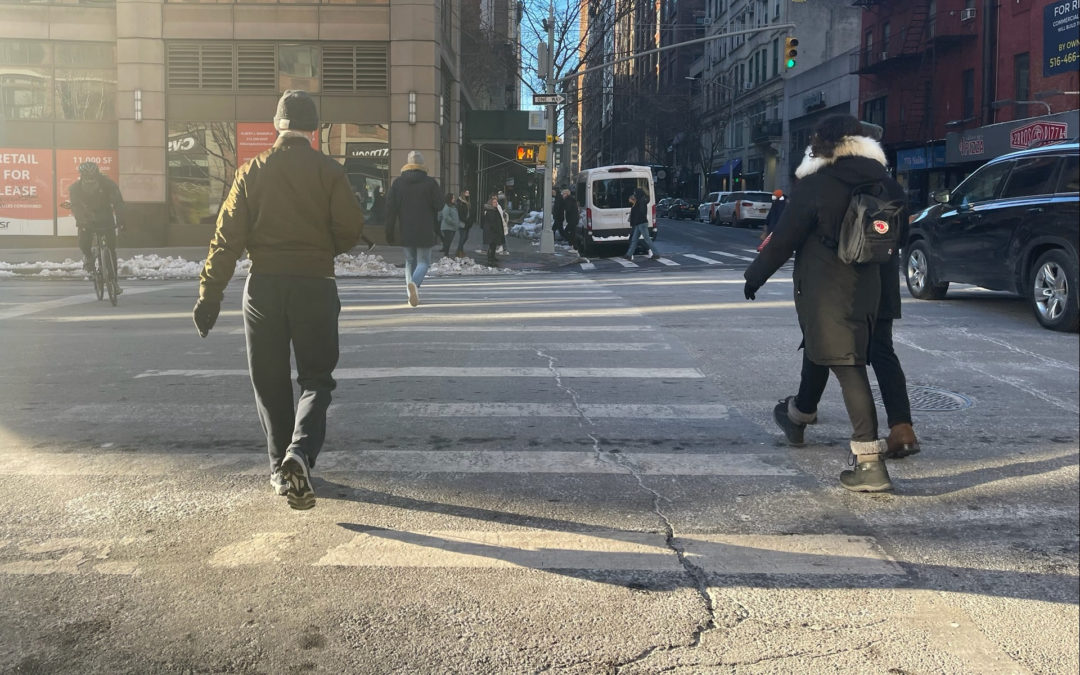
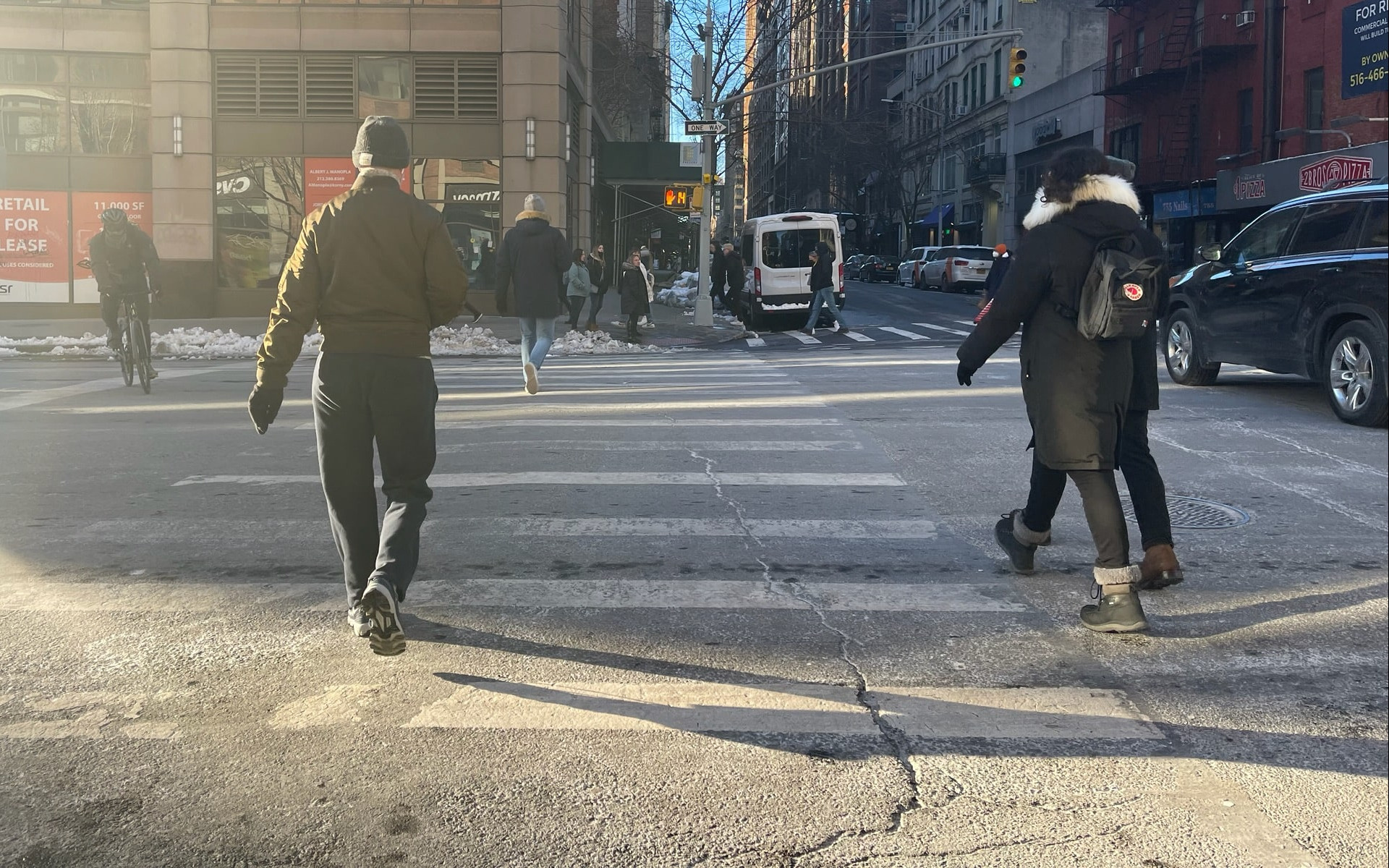
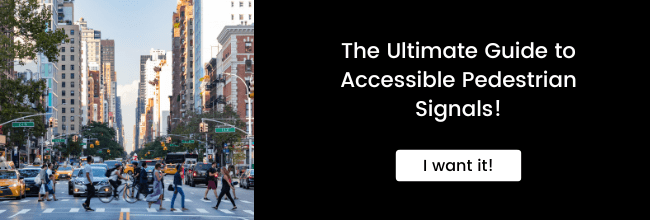
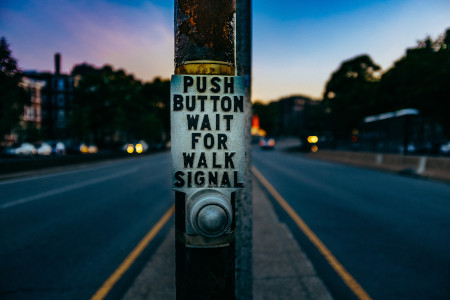

Recent Comments